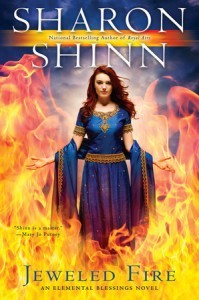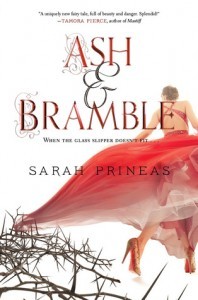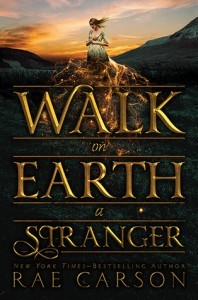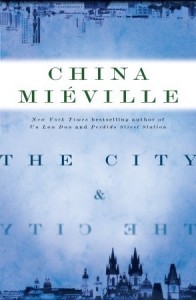Rachel Neumeier's Blog, page 326
September 21, 2015
Progress! And, more work ahead —
So, nearly finished with this revision of The Mountain of Kept Memory. What is it so far, two weeks? Not bad, not bad.
I’ve rearranged the book a bit, written 4 complete new chapters and parts of 3 other chapters, adding 25,000 words in the process. I’ve also gone through and checked off nine pages worth of specific line-by-line comments, adding little stars by the ones I haven’t dealt with yet.
Next: dealing with the somewhat larger issues addressed by more general comments. Primarily clarifying one or two elements. Then dealing with a couple dozen notes I added to myself as I worked through the manuscript. I hope to have it all done and tied up with a bow by this time next week. That would be a good thing, because:
OH MY GOD I HAVE ANOTHER BIG REVISION WAITING.
I’m guessing it isn’t pure chance that every. single. revision. this year has been BIG. I expect this is the result of finishing a project and zapping it off to my agent or my editor, without time to let it set for a while and then come back to it. But just out of curiosity, I worked out a rough estimate of what I’ve been doing this year, and it looks like this:
Jan-Feb — Finished Door Into Light, adding 60,000 words to the incomplete ms, thus bringing the total length to about 140,000 words. Sent to my agent for comments.
April-May — Revised The Mountain of Kept Memory, removing the secondary protagonist and handing part of his role to a different character, with associated changes to the plot. Sent to my S&S editor for comments.
Also, reviewed page proofs for The Keeper of the Mist from my RH editor.
June-July-August — Finished The White Road of the Moon, adding 100,000 words to the (very) incomplete partial manuscript and thus bringing the total length to approximately 140,000 words. Sent to my agent for comments, with a specific concern about the length and complexity and about not being able to develop some of the relationships adequately because the thing was too long already.
Also, continuing copy editing queries about The Keeper of the Mist.
August — got back comments on Door Into Light, with suggestions to extensively re-write all the scenes that take place in Kalches to increase the action. Rewrote, replacing or extensively re-writing an estimated 40,000 words (this is a very rough estimate).
September — got back comments from my editor on The Mountain of Kept Memory, with a request for a strict alternation of chapters between Oressa and Gulien and a bunch of smaller-scale notes. Added four chapters plus two partial chapters plus addressed the smaller concerns, for an estimated 25,000 words added plus detail work.
September — got back comments from my agent on The White Road of the Moon, with suggestions to completely cut two important secondary characters (Craig, if you read this, Caitlin suggests cutting Timias and handing the important part of his role to Jaift; also cutting Dayan and removing most or all of the blue/white priesthoods); remove the pov sections for another secondary character; entirely skip two visits to various cities; and thus simplify the cast and cut at least 30,000 words, preferably more.
So . . . that is what I will be tackling in October.
After which, I’m telling you, I’m shutting down the laptop for the whole of November. I mean, jeez. I think I have *so far* written something in the neighborhood of 320,000 words this year — not counting whatever I do to The White Road.
Total number of books *read* thus far this year: 58. That is way, way, under where I would usually be at this time of year. Sure is clear why. Next year should be a much easier pace. I think. Probably.
Currently reading: All the Liaden books by Lee and Miller. I am not as interested in the series as I once was . . . I still feel that Agent of Change and Carpe Diem are the best of the lot . . . but it is a familiar universe, with about four or five books I hadn’t read plus some earlier books I am re-reading. I’m finding these very appropriate revision-reading, the books easy to slip into and out of.

September 17, 2015
You will never read all the things, and that’s okay
You know, although I would feel a little funny about letting my TBR pile get as big as some of you, this is because I am not organized enough to have a spreadsheet — I’m so impressed by those of you who manage to keep up with a spreadsheet! — and so I would fear losing most of the titles into the morass of unread books.
It definitely is not because I think there’s anything wrong with having more books on my TBR pile than I can actually get to.
Even with a mere 250 (or so) books that I actually have in my hands, I fairly often do the same thing Mac (from the comments) says he does: Avoiding buying books that I really want until I am actually ready to start them that second, for fear that if I buy them earlier, they’ll be lost within the, ah, cosmic biblio-volcano. Though my volcano is less cosmic, and I’m more inclined to buy books as they come out if I know the author personally or just generally want to support the author.
This:
Is just a joke. I don’t actually feel guilty about not reading all the things the minute they come out, even if that means losing out on the experience of reading a particular book that everyone else is already talking about, and I definitely don’t feel guilty about knowing I’ll die with a significant part of my TBR pile unread. I would feel a bit guilty about failing to support an author with a prompt purchase of a new title, but nothing else connected with the TBR pile makes me feel at all guilty.
The truth is, we will all die without having read most of the books that we would have loved, whether we put them on our TBR piles or not. A smaller TBR pile just means you are keeping less close track of the books you’re not reading. This post by Linda Holmes is totally correct: We really are all going to miss nearly everything.
Holmes contrasts the mental act of “culling” with that of “surrender.” Culling, she says, happens when you declare that All Romance Novels Are Terrible, or that All TV Is Awful. This protects you from feeling guilty about ignoring all romance novels or all TV and reduces the amount of great stuff you are aware of missing. But it’s an illusion, because the truth is that you would undoubtedly love some of the massive number of romance novels or TV shows that you’re ignoring.
Here is what Holmes says about “surrender:”
Surrender, on the other hand, is the realization that you do not have time for everything … and that this fact doesn’t have to threaten your sense that you are well-read. Surrender is the moment when you say, “I bet every single one of those 1,000 books I’m supposed to read before I die is very, very good, but I cannot read them all, and they will have to go on the list of things I didn’t get to.”
It is the recognition that well-read is not a destination; there is nowhere to get to, and if you assume there is somewhere to get to, you’d have to live a thousand years to even think about getting there, and by the time you got there, there would be a thousand years to catch up on.
Now, my goal isn’t to be well-read, particularly. It’s to enjoy reading. I avoid all computer games and I almost entirely stopped watching TV, but I know perfectly well I am missing out. I just prefer reading and can’t do everything.
David said in the comments to the previous post that he re-reads less than he used to because his TBR pile is so huge. I get that!
But because I don’t care whether I read all the books on my TBR pile, I don’t feel overwhelmed and I do feel quite free to re-read extensively. I grant you, partly this is because I can often (not always) re-read fiction when working on my own writing, whereas reading new-to-me fiction is much more likely to interfere. But mostly it’s because I enjoy re-reading. Since I’m reading strictly to enjoy the experience, not to conquer the TBR pile or keep up with the buzz over newly-released titles, if I want to re-read a book, I do. I mean, I’ve read The Goblin Emperor three times now, maybe four, and it’s only been out since March.
Amanda Nelson had an interesting post about this at BookRiot not so long ago, too:
One of our own recently wrote about her TBR and had to be defended from accusations of being a hoarder, a term that comes up frequently whenever someone talks in public about having a personal library…. There’s not a number at which a TBR becomes suddenly immoral. You’re not in an objective safe zone at 99 and in the Very Bad Person Zone at 100. You don’t need to apologize for loving an activity and owning the items you like in order to do that activity.
I wasn’t aware that anyone had the nerve to make any such accusation, but listen, you know when you should be ashamed about being a hoarder? When you are hoarding living animals that you are not taking care of properly. Full stop. Otherwise, I doubt your collection of whatever is doing anybody any harm and you certainly have no reason to feel guilty or overwhelmed simply because you’ve organized some fraction of the endless heap of books you would like to get to, rather than ignoring the existence of the heap. This is why I feel that posts like this one at Book Revel are completely off base. As far as I’m concerned, an extensive TBR pile is something to celebrate, not something to worry about.
Granted that if you have 4000 books on your TBR pile, you may find it useful to cut it down to 2200 as David commented that he managed to do. But you cut down your TBR pile to make the list more useful, not because there’s anything intrinsically wrong with not getting to all the books this year.
Given that a picture’s worth 1000 words, this cartoon by Theresa Romain pretty much perfectly captures my attitude toward the TBR pile:

September 15, 2015
The TBR Pile, It Is A Monster
I expect nobody’s TBR pile is actually shrinking. (Anybody?) But mine may implode under its own mass, like a black hole of verbiage.
I’m exaggerating. I’m sure lots of people have larger TBR piles than me, though if you throw in my Amazon wishlist, which is kinda a subsidiary TBR pile and kinda an auxiliary memory, well, it does get up there. Let’s see . . . about 150 books on the wishlist, about 125 on my Kindle, about 100 on the actual physical shelves. Is that out of all reason for a TBR pile? How do yours compare?
Anyway, LOOK AT THE AVALANCHE OF NEW BOOKS COMING. This fall looks like it’s bringing a veritable deluge of titles.
Some of these I cannot live without even if I don’t have time to read them (Group A).
Some have activated my guilt circuits because I am so far behind with starting the series these new volumes are continuing (Group B).
And some are on my radar because I know I like the author, or because of intriguing reviews by bloggers I follow, or both (Group C).
All are liable to add to the weight (real or virtual) of my TBR pile.
Sorting them out by category (with no particular order within categories):
Group A) Books I must have and cannot live without.
1. Ancillary Mercy by Ann Leckie, due out Oct 6. Although I really want to read this, it may be a while, because I definitely want to re-read this series from the top before I read Ancillary Mercy itself.
2. Jeweled Fire by Sharon Shinn, due out Nov 3. I will probably read this right away (for reasonable values of “right away”) because I don’t feel any need to re-read the first two books. Mostly because I have already read them a couple times each.
4. Apprentice to Elves by Elizabeth Bear and Sarah Monette, due out October 13. I am dying to know how they work out the rest of this story. I have Such! Predictions! So I really want to know how close I’ve come to what they wind up doing. That is besides the normal pleasure or reading a highly anticipated story.
5. An Ancient Peace by Tanya Huff, due out Oct 6. Though presented as the first book of a new series, the important feature is that it really continues the Valor series, which is possibly my favorite military SF series ever.
Group B: Books that I feel terribly guilty about because I am behind with starting the series:
6. Dragon Coast by Greg van Eekhout, due out tomorrow. Wait, I mean due out today — how time flies! The first book in this series, California Bones, was, if I remember, possibly the first book I purchased during this calendar year. And have I read it yet? No. Hence the guilt. Incidentally, here’s Liz Bourke’s review of Dragon Coast. I haven’t read it, except to note that she says they are, “really entertaining and dramatic fantasy heist novels.” I can’t read reviews of Dragon Coast because I am still trying to avoid spoilers for California Bones.
I am not super super super keen on buying a whole trilogy before I have read even the first book. Yet I would like to support Greg, whom I have met (we share an agent). Thus I am really, really likely to read California Bones soon. As in, this year. I hope.
Group C: Books that just caught my eye
7. Ash and Bramble by Sarah Prineas, due out today. This is a Cinderella retelling, which I expect to like a LOT better than Cinder because so far I have enjoyed all of Sarah’s books — full disclosure: we also share an agent, and she gave me extremely useful feedback on Black Dog and Pure Magic — but I am excited about Ash and Bramble partly because this is Sarah’s first YA rather than MG title.
Moving on, moving on . . . let’s see . . . right:
8. Walk on Earth a Stranger by Rae Carson, due out Sept 22. The description as such doesn’t make me sit up, particularly, but this review by Brandy at Random Musings caught my eye this morning. Such an evocative, wonderful title. Also, what a beautiful cover:
9. Silver on the Road by Laura Anne Gilman, out October 6. I’m not actually sure whose review caught my eye, but I know this one has been on my radar for a couple of months.
And, look, I managed a top ten list purely by chance!
10. Darkness On His Bones by Barbara Hambly, coming out Oct 1. A new Ysidro book! I only just found out about it, very timely, since here it comes any day now. After the ending of the last one . . . um, Kindred of Darkness, that was it . . . I could not quite see how Hambly would write another one, since James Asher has pretty much sworn to kill Ysidro next time he gets a chance, out of principle. Remember, this is a world where the vampires really have to kill lots of people, so you see the moral dilemma. Well, here’s how Hambly set this next book up:
When James Asher is found unconscious in the cemetery of the Church of St. Clare Pieds-Nus with multiple puncture-wounds in his throat and arms, his wife, Lydia, knows of only one person to call: the vampire Don Simon Ysidro. Old friend and old adversary, he is the only one who can help Lydia protect her unconscious, fevered husband from the vampires of Paris.
Yep, that’d do it. Lydia certainly did not make any such private vow. This book must be heavy on Lydia and Simon Ysidro. Good. I’ve always particularly loved Lydia.
Okay! What did I miss that you are particularly anticipating? And is 350 books (or at least 250) insanely too many for a TBR pile? Because, honestly, what can I do? All these people will keep writing books . . .

September 14, 2015
“The Martian” sounds just right —
If, like me, you prefer movies that stick closely to the book, then this review, at Ars Technica, of “The Martian” is promising.
Screenwriter Drew Goddard has translated Andy Weir’s novel into a script that keeps almost all of the science and humor intact, and director Ridley Scott allows the vast emptiness of Mars to speak for itself, while keeping the gimmicks to a minimum.
And, of course, Matt Damon does wonders for the role of Mark Watney—the best botanist on the planet. The planet of Mars.
I don’t usually rush out and see movies . . . I’m pretty likely to wait and get the DVD if I bother at all . . . but I’d really like to see this one on the big screen. All that “emptiness of Mars,” you know.
Also, this:
…even cast members who have few lines turn in solid performances. The rest of the Ares 3 crew—led by Jessica Chastain’s Commander Melissa Lewis—show off excellent space chops, and the scenes on the ground with NASA paint the agency and its people with one of the kindest brushes in recent memory. This is a movie in which NASA plays a central role—and that’s perhaps one of the most interesting aspects of the story.
Yep, sounds like a must-see movie.
With that and “The City and the City” movie series eventually coming up, and the film adaptation of Vonda MacIntyre’s “The Moon and the Sun,” I’m definitely more excited about movies than usual.

It’s a science-fiction world
I need to make a note of this for writing SF in the future:
Hidden in Einstein’s Math: Faster-than-Light Travel?
This is, alas, apparently a misleading title. What we have is math that makes sense both below the speed of light and above the speed of light, with a discontinuity at “c”. It says. It’s not like I tried to look through the math, which is not presented in this little article anyway, except possibly if you click around through the offered links.
But whether or not any of this actually pans out, you can instantly see how well this kind of thing suits space opera FTL travel, with hyperspace and everything.

September 11, 2015
You’ve probably already heard about the just-discovered hominid species —
The news of finding this new and rather distinctive new South African hominid suddenly appeared all over public fora earlier this week, but I didn’t remember to mention it until now. The discovery, by recreational cavers, actually took place a couple of years ago, though I don’t remember hearing about it at the time. Can you imagine finding some kind of burial chamber while caving, by the way? Because totally creepy, even if you are sort of keeping an eye out for fossils.
So, a major archaeological find — super major behaviorally, too, because the newly discovered species really does not seem to have had a big enough brain to be burying its dead, and yet here is this cave, with no other obvious way to get the the bones into it.
Here is the National Geographic article about the new speices.
It’s a really interesting and well-written article, and you should click through just for the pictures. Check out the picture of the cave, too, and you can see why it took so long to discover this particular chamber.
The species has been assigned to Homo rather than Australopithecus, but the skeletons show rather a mish-mash of characteristics. Apparently it’s considered Homo because skull and tooth characteristics are weighted more heavily than other skeletal characteristics — this is a general rule in taxonomy, by the way; rabbits are not considered rodents because their skulls and dentition is peculiar in certain ways.
Anyway:
There were some 1,550 specimens in all, representing at least 15 individuals. Skulls. Jaws. Ribs. Dozens of teeth. A nearly complete foot. A hand, virtually every bone intact, arranged as in life. Minuscule bones of the inner ear. Elderly adults. Juveniles. Infants, identified by their thimble-size vertebrae. Parts of the skeletons looked astonishingly modern. But others were just as astonishingly primitive—in some cases, even more apelike than the australopithecines …
…A fully modern hand sported wackily curved fingers, fit for a creature climbing trees. The shoulders were apish too, and the widely flaring blades of the pelvis were as primitive as Lucy’s—but the bottom of the same pelvis looked like a modern human’s. The leg bones started out shaped like an australopithecine’s but gathered modernity as they descended toward the ground. The feet were virtually indistinguishable from our own.
Naturally one thinks of the Piltdown hoax. But it’s impossible this is a hoax. I mean, not only would it be really tough to fool modern paleontologists who know all about Piltdown, but also the confusing mix of primitive and modern features exist in things like teeth with modern crowns and primitive roots.
So. Sometimes it feels like all major paleontological and zoological and geological discoveries MUST have already been made. And then we find a bunch of feathered dinosaurs or a cave with lots of bones of a new hominid species and whoops! We have to re-evaluate a whole bunch of interconnected theories; in this case about the Homo suite of characteristics and behaviors.
Next: I sure want someone to figure out the actual age of these bones. No one has a clue yet.

September 10, 2015
Here’s a fascinating choice for a 4-part BBC miniseries —
According to GalleyCat, the BBC is going to make a four-part miniseries out of . . . China Mieville’s THE CITY AND THE CITY.
Pause to imagine that. A TV series. Of THE CITY AND THE CITY.
Remember how it was never actually one hundred percent clear just how the two cities coexisted? Remember how the city of Beszel had a kind of decaying urban Eastern European feel to it, compared to the much more prosperous and vibrant Ul Qoma? And how not seeing one or the other was kind of an act of will and yet seems sort of like a real thing, somehow?
That is what I mean when I occasionally say this book almost-but-not-quite worked for me. I could never quite get how the cities were really related, or not related, or blended, or not blended, or whatever. There was all this really seeing vs unseeing vs choosing not to see and it was all very evocative without ever actually being clear.
But I really enjoyed the book, though. I loved Tyador Borlú of the Extreme Crime Squad, and come to think of it I was pretty fond of many of the other characters, too. I loved the strange setting even if — maybe a little bit because — I never actually understood it. And I enjoyed the mystery/thriller vibe very much, and liked the plot arc and the resolution.
So I hope the BBC version is fantastic. I can’t wait to see it.

September 9, 2015
Titles are hard
And to help us all out with titling our current WIP, we have Elizabeth Bear:
Elizabeth Bear’s How To Title Your Science Fiction or Fantasy Novel or Series: A Tutorial in Three Parts: Part the Oneth: STRUCTURING YOUR TITLE
I actually saw this post several days ago or maybe a couple weeks ago and thought it was funny . . . and actually potentially useful, maybe . . . so I’m glad I remembered it.
The ADJECTIVE NOUN title comes in two subforms, of course: ADJECTIVE NOUN proper and the slightly more common ARTICLE ADJECTIVE NOUN. This gets interesting, because I feel through entirely subjective anecdata that ADJECTIVE NOUN (occasionally ADJECTIVENOUN) usually indicates a genre book (Lady Knight, Conjure Wife, …) whereas DEFINITE ARTICLE ADJECTIVE NOUN (The Broken Kingdoms. The Forever War, … The Orphan Queen) could go either way, and INDEFINITE ARTICLE ADJECTIVE NOUN says literary novel to me. In fact, the only genre examples I can think of off the top of my head is A Swiftly Tilting Planet, and that one throws in an adverb for good measure. …
This is one of the true classics of genre titling, by the way. In a statistic I just made up on the spot, I would estimate that 78.3% of genre books have some subvariant of the ADJECTIVE NOUN construction. (You can also jazz it up by going NOUN ADJECTIVE, too (Man Plus. Girl, Interrupted. I think Boneshaker probably goes under NOUN, but whatever. You get the idea.).
Titles are, in fact, hard. They really are. Often, we all just shrug and go with, as in the the examples above, the ARTICLE ADJECTIVE NOUN title, as in The Floating Islands, say, and then depend on the cover to be evocative enough to give the title a boost. Anyway, ARTICLE ADJECTIVE NOUN may be generic in form, but is at least a touch more sophisticated than the MAIN CHARACTER’S NAME titles, which always suggest to me that the author (and publisher) just gave up trying.
But you may not know how painful titles can be. I and my editor (and I gather a good many people got roped in at her end) went back and forth for ages before settling on The Keeper of the Mist for my next Knopf title. The title does make perfect sense given the story, but again I do think we are letting the evocative cover do some of the heavy lifting.
Though “mist” is an intrinsically evocative word, I think, so the title does have that going for it. If you click through to Elizabeth Bear’s post, you may enjoy reading through . . . or skimming . . . the looooong list of words provided: Now that you have the constructions, you need some words to plug in. Feel free to use as many as you like. And convert them into adjectives or adverbs as needed…. for example, Blood to Bloody. These are all great well-recognized Fantasy Nouns, and using them on a book cover will make sure that readers know what they’re getting!
By some mysterious error, such as failing to include the entire English language, “mist” does not seem to be on The List. Despite this, I think we can all agree that “mist” is totally a fantasy indicator in the title, yes? Mists of Avalon, Mistborn, Soldier of the Mist, The Garden of Evening Mists (by the Malaysian author Tan Twan Eng), reviewed here by Fantasy Book Critic; I haven’t read it, but hello, evocative title.
Anyway, Bear’s post is fun to read and it’s not entirely impossible that it might also turn out to be helpful in building a real title for a real book.
Incidentally, I did find this less tongue-in-cheek post about titles, by the agent Rachelle Gardner, moderately useful, though the process she suggests is a good bit of trouble and not necessarily worth it if you can just use some boring working title and hope for your editor to be inspired.
My favorite working title for one of my books, btw, is The Mountain of Kept Memory. I still can’t guarantee that this will be the final title, though Navah has not yet declared that she hates it or that Saga’s marketing people hate it, so hopefully that’s a good sign. I would consider all the rest of my titles to be, well, fairly generic fantasy titles.
Anyway, if you’ve got a minute to click through, Bear’s post is fun to read.

September 8, 2015
Even though I didn’t turn on my TV, Star Trek kept coming up this weekend
Several Star Trek posts caught my eye over the weekend, while I was mostly engaged in creating an annotated table of contents for The Mountain of Kept Memory so I could see the flow of events better without re-reading the whole manuscript, and then writing a new chapter 6, a new chapter 8, and outlining a new chapter 10. Tonight I will write chapter 10 . . . or most of chapter 10, at least, I hope . . . and then consider whether to break out a new chapter 20 or go back to the beginning and begin addressing the smaller elements of this revision. I must say, the book is getting to be longish, but when your editor asks you to add three or four new chapters, surely she expects that to happen?
Anyway, Star Trek posts:
I have to admit, I’m kinda amazed anybody would watch all of the Original Star Trek as an adult, but it’s quite true it would fill in otherwise gaping holes in your cultural knowledge.
This post is by Megan Geuss at Ars Technica, who also watched the animated series (There was an animated series?) and the movies and is still working her way through all the myriad Star Trek spinoff shows.
Geuss says, “These things made the animated series easier to get through than The Original Series. And, upon reflection, I think this is how I would introduce The Original Series to someone with zero knowledge of the early shows. The live-action episodes are too long and drag a bit too much. The movies don’t necessarily require that the viewer is familiar with the characters—but it helps a lot. But the animated series is easy to digest, fun, and still keeps most of the major characters. From there, you could move onto the live-action shows if you were so inclined, or cherry pick the best ones for a novice watcher. Then hit the movies—because, as I found out, the movies were what tied everything together and gave Star Trek real depth.”
I thought that was interesting, particularly as I honestly don’t recollect even the existence of the animated series. I do agree about the movies, though — I think they were mostly at a higher level than the Original Series episodes.
The other post I happened across was The Politics of Star Trek by Timothy Sandefur. This post is a bit bleak, I will say:
Star Trek’s latest iterations—the “reboot” films directed by J.J. Abrams—shrug at the franchise’s former philosophical depth. In 2009, Abrams admitted to an interviewer that he “didn’t get” Star Trek. “There was a captain, there was this first officer, they were talking a lot about adventures and not having them as much as I would’ve liked. Maybe I wasn’t smart enough.” His films accordingly eschew the series’ trademark dialogues about moral and political principles, and portray the young Kirk and crew as motivated largely by a maelstrom of lusts, fears, and resentments.
Which, okay, but . . . what I remember is an original series that was often really pretty bad, not to mention perhaps a bit shaky philosophically. Also, I have to say, I found the first Reboot movie basically a lot of fun. Granted, I haven’t seen the other Reboot movies, but still.
Having read both articles, I wouldn’t mind hearing what Sandefur might have to say about the Original Series episode “The Turnabout Intruder,” described thus by Geuss:
“The Turnabout Intruder” sees Captain Kirk switching bodies with mad scientist and scorned woman Dr. Janice Lester, who can’t control the ship in Kirk’s body because she’s too emotional and vindictive. Although Captain Kirk admits at the beginning of the episode that it’s not fair that women “can’t become starship captains,” (which was news to me although I had just finished almost 67 hours of living in the Star Trek world), the rest of the episode trips over itself trying to show that women really shouldn’t be in positions of power—they’re hysterical and dark creatures that want what they want without thinking about their responsibilities to those around them.
I don’t remember the episode at all, but it’s hard to see it as drawing on superior moral judgement.
The one Star Trek I am most likely to re-watch and then complete watching, since I never saw the whole thing: Deep Space Nine. And while I might have Sandefur’s comments in the back of my head from time to time, I would expect to enjoy it a lot more than most of the Original Series episodes. Quality of storytelling, acting, and even special effects do matter, aside from any overarching themes that may or may not be intrinsic to the show.

“Up” was a great movie, but I’m pretty sure you can’t get a house off the ground with balloons.
On the other hand, you can apparently make your very own helicopter from a bunch of drones and a lawn chair.
The creative guy who did this calls his machine “The Swarm Manned Aerial Vehicle Multirotor Super Drone.” The name alone is cool enough to be worth the trouble of building the machine.
Pretty cool!












